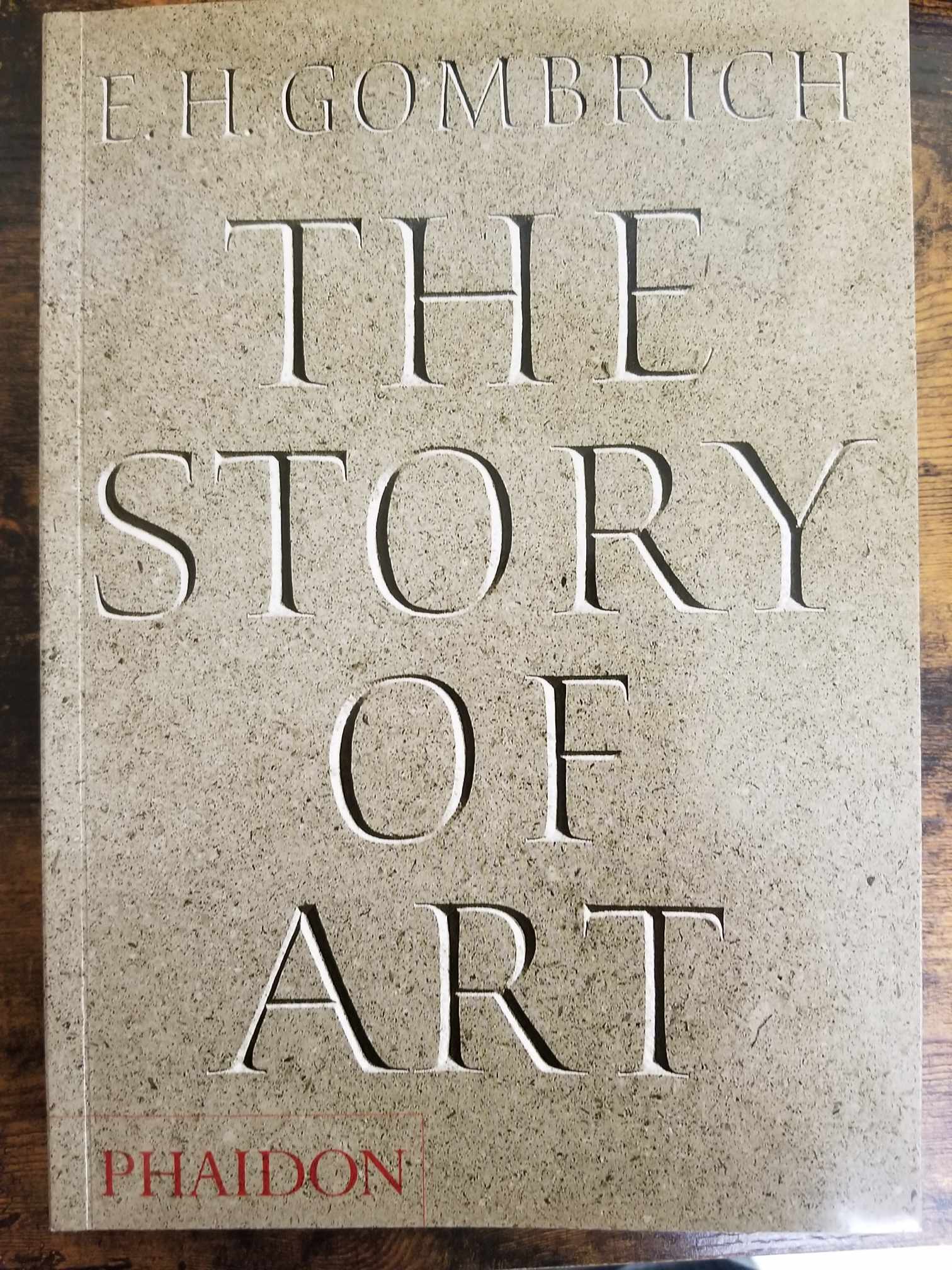
- Title: The Story of Art
- Author: E.H. Gombrich
- Genre/Subject: Art History
- Publisher: Phaidon
- Publication Date: 1950 plus sixteen more editions.
- Start date: 7/2/24
- Finish date: 7/12/24
Review:
Well. Was not expecting this to be a book that I couldn’t put down, but it ended up that way. Actually I had read some reviews that said that very thing, that readers could not put it down but I figured well reviews are sketchy these days so let’s hope this won’t be too boring and dry. Happily, this textbook read like a novel and was literally a page-turner.
So, this book was written in the 1940s and first published in 1950, and like I stated above it was designed to be a textbook on the history of Art. Which it was, but it was so readable, so engaging and so totally devoid of highbrow language that it was like reading a gripping novel. Do people still say gripping?
This is the story of Art, not the history of Art and I want to make that distinction clear. Other books will delve into the history of this movement or that technique and that’s great, built for purpose if you need that information. But the story of art, that takes the reader from the beginnings in cave paintings through classical Greece and then century by century tells the story of how each new trend or movement built on the previous ones right up to the wacky stuff in Andy Warhol’s factory, and beyond.
Now to be clear, this is the story of western art as developed from ancient Egypt through the development of European art. So while eastern art and art traditions are mentioned when relevant the focus remains on art in the European tradition. It’s quite the story.
George Costanza once said, “I hate art. Art always has to be explained to me.” And as funny as that is, it’s actually true for most people unfortunately. But I will flip that quote around a bit and make it “I love art. Now that it’s been explained to me.” If you don’t understand what you’re looking at you’ll never really like it. Oh sure you might pretend to like art so you have a better chance of fucking art bitches at sexy parties, but since I rarely get invited to Tribeca soirees I decided to learn what this art thing is all about.
There are over 600 pages in this book so I can’t give you a neat summary of it. You have to read it, put in the time and get to know art as it has been practiced and developed in the western tradition. And I don’t mean that ridiculous Dan Brown Da Vinci Code thing of looking for Easter eggs in renaissance paintings. I mean gaining an honest understanding of what the artists through history were trying to convey through their labors. Sure the odd bit of trivia is fun, even useful at sexy parties, but it shouldn’t be the main focus of learning about art and its story through the ages.
Renaissance art was glorious, we’ve all seen countless images of the Raphael’s and Carravagios in our life, but it wasn’t the ne plus ultra that we are often expected to believe. Many of the pieces that I was told were weirdo works are actually extraordinarily beautiful and don’t need as much artsplaining as one might imagine.
I really enjoyed reading this and learned a lot, like a lot, about art that I never knew before. In the Mona Lisa for example she has no eyebrows because it was fashionable at the time for women to shave them off. Makes me wonder what her growler looked like, but I digress. Or the fact that the art of perspective was known to the ancients, look at the Lascaux cave paintings from 12,000 years ago. It was formalized and the laws codified in the Renaissance but it wasn’t invented by the Renaissance masters.
This was a great book and an excellent reading experience. The illustrations and reproductions were of excellent quality so you could easily have a look at what the text was describing. You can do a lot worse things with your time than spend a week with your nose stuck in these pages.
This book made me want to: Use chiaroscuro in a sentence, preferably at a sexy party.
Overall rating: 



Readability: 



Plot: 



Other: 



 Titties
Titties


Leave a Reply